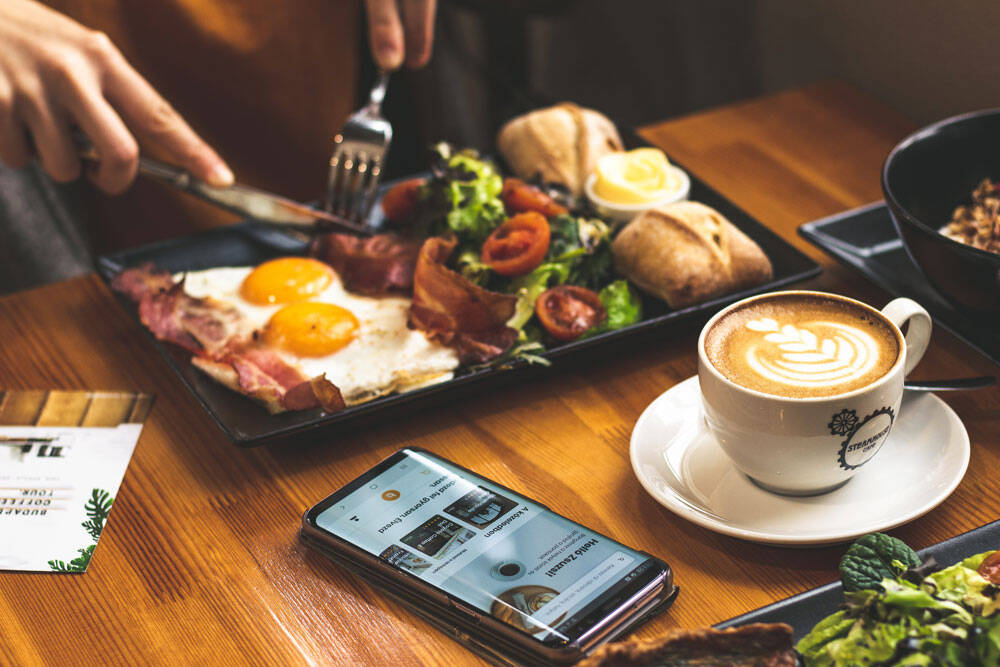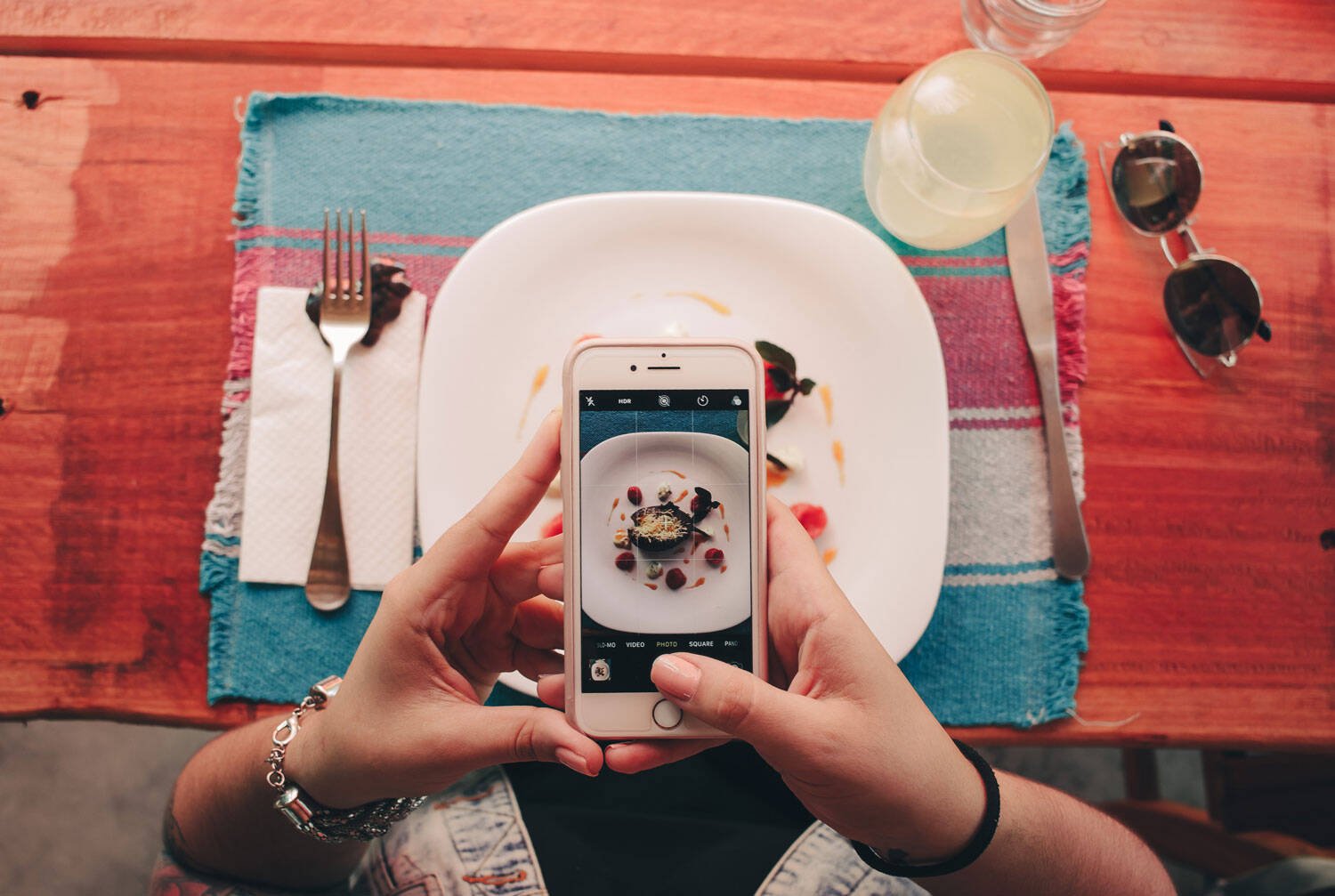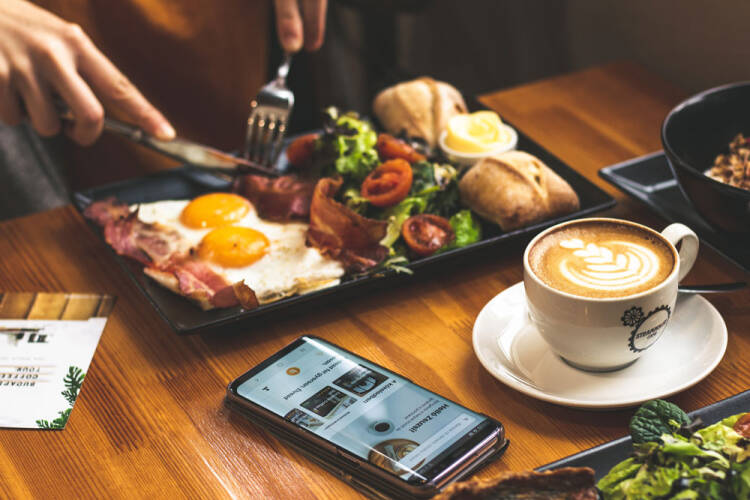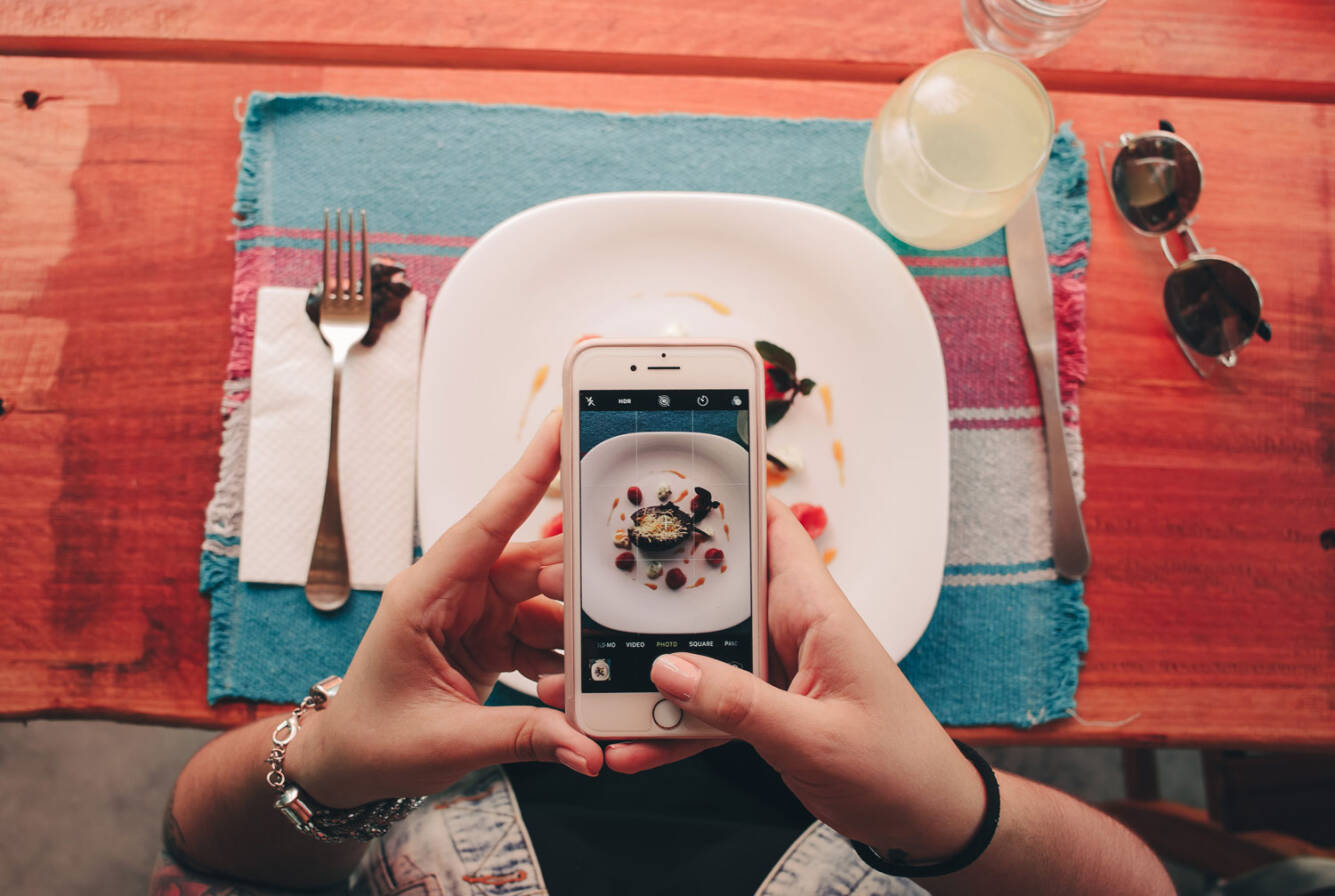Source: www.adyen.com/blog/how-technology-is-transforming-the-casual-dining-industry
Kimes Ph D, S. E., & Collier Ph D, J. (2014). Ready and Willing: Restaurant Customers’ View of Payment Technology.
Klosse: “Before COVID-19 the restaurant industry was pretty conservative. Because of these challenging times there’s more open mindedness towards technology. Our app now offers a solution, for a more coronavirus-proof restaurant experience. The demand for our product has increased a lot. But because of the growing demand there’s also a lot more competition out there. It means that, as a company, we have to stay on the ball and facilitate the fast growing needs and keep looking to the future.”
Reduce risk solutions
Although the research was published a couple of years ago and has shown that consumers are willing (and even prefer) to use technology while visiting restaurants, it wasn’t until the last couple of months that the payment apps started popping up everywhere. An explanation for the sudden growth can be found in entrepreneurs responding to public concern that the coronavirus could be transmitted by cash, and the advice to keep physical contact to a minimum. Smartphone-based payment apps - where no physical contact of the same object by multiple persons takes place - offer solutions for using cash and being in close contact. But not only do payment apps offer a solution during the global pandemic; there are also opportunities post-coronavirus. Before guests receive their order, apps offer multiple online touch points to interact with a restaurant—like asking about a reservation or placing an order. These interactions offer possibilities regarding customer loyalty and preferences.

“Because of these challenging times there’s more open mindedness towards technology”
consumers ready for change
One might wonder if digital service is something customers want while visiting restaurants and cafes, where personal service and hospitality is usually the added value to an experience. But the answer to that question seems to be ‘yes’. A study from Cornell University in 2014 has shown that restaurant guests seem enthusiastically ready to adopt customer-facing payment technologies, at least in casual restaurants.
In the study three sub-samples of consumers rated table-top tablets, smartphones, and traditional check settlement against eight measurement constructs. The constructs were accuracy, control of pacing, convenience, efficiency, experience quality, future spending intentions, privacy, and satisfaction with the payment method. In all eight constructs, paying with technology was rated significantly higher than the traditional settlement approach.


A selection of available order-reservation-payment apps
The Nirvana XP app enables consumers in the US and India to use a mobile app to check in, pre-order, make reservations, order online and use its self-service payments using their devices via QR codes. Nirvana XP was specifically built for large, multi-location restaurants of all types.
TabbedOut is a similar app that is available in the US and offers businesses to remove staff and guest touch-points and provide the safe profitable guest experiences with mobile ordering and touchless payment.
MyCheck works with restaurants in the US, Britain, Brazil and Israel. The company enables users to add, store and manage multiple payment methods in their digital wallet, and allows them to order, view and split their bill.
CloudWaitress is available in Australia and offers users to make a reservation and stay updated through e-mail, and lets users order directly from their table by selecting their table number or scanning the QR code.
NinjaOs is an online food ordering system for users in Singapore. The app covers a wide range of restaurants where customers can order food but the app also offers dine in and reservation facilities.

“Restaurant guests seem enthusiastically ready to adopt customer-facing payment technologies.”
“We started our business out of personal frustration; nothing feels more annoying than having to wait in line to be seated or to order in a restaurant. So, we started looking for a solution”.
It wasn’t just Klosse and his partners that shared this frustration. Long queues cost the European retail industry £11 billion in lost sales each year.
“At first Obur was meant to relieve restaurant personnel during busy days. The app can take care of a certain amount of workload and helps businesses to be more efficient. It can be compared to the handheld waiters use while taking orders, only now customers use their own phones.” Klosse tells Food Inspiration.
Ordering through QR codes
Dutch entrepreneur Lodewijk Klosse and his partners started their business - Obur - back in 2019. Obur is an app that provides restaurants with QR codes for their guests. Once customers scan the QR code with their phone, they immediately see the digital menu, are able to place their order and pay. Through Obur orders arrive on the restaurant's kitchen screen, in the POS system and / or the receipt printer.


Innovation in troubling times
While restaurants, cafés and other businesses are struggling to survive during these difficult times, other entrepreneurs are responding to the consequences of COVID-19 with new payment apps and reservation systems that help people working in the restaurant business to keep responsible distance from their guests and vice versa. Currently restaurants can choose from a gigantic array of options to provide their clientele with service through mobile phones. Some apps make it possible for customers to place orders and pay afterwards by using a QR code, others also allow people to make reservations and see the menu beforehand. The huge array of customer-facing payment technologies seem similar but are all - slightly - different in use and format.

Lisa Appels Wouter Noordijk
Payment apps have been a rising star the past couple of years. From Apple Pay to the Starbucks app, payment through smartphones has increased in popularity and seems to do so even more during the recent pandemic.
is changing the restaurant experience
Technology

5 min
COOL CONCEPT
TECHNOLOGY IS CHANGING THE RESTAURANT EXPERIENCE


Source: www.adyen.com/blog/how-technology-is-transforming-the-casual-dining-industry
Kimes Ph D, S. E., & Collier Ph D, J. (2014). Ready and Willing: Restaurant Customers’ View of Payment Technology.
Klosse: “Before COVID-19 the restaurant industry was pretty conservative. Because of these challenging times there’s more open mindedness towards technology. Our app now offers a solution, for a more coronavirus-proof restaurant experience. The demand for our product has increased a lot. But because of the growing demand there’s also a lot more competition out there. It means that, as a company, we have to stay on the ball and facilitate the fast growing needs and keep looking to the future.”
Reduce risk solutions
Although the research was published a couple of years ago and has shown that consumers are willing (and even prefer) to use technology while visiting restaurants, it wasn’t until the last couple of months that the payment apps started popping up everywhere. An explanation for the sudden growth can be found in entrepreneurs responding to public concern that the coronavirus could be transmitted by cash, and the advice to keep physical contact to a minimum. Smartphone-based payment apps - where no physical contact of the same object by multiple persons takes place - offer solutions for using cash and being in close contact. But not only do payment apps offer a solution during the global pandemic; there are also opportunities post-coronavirus. Before guests receive their order, apps offer multiple online touch points to interact with a restaurant—like asking about a reservation or placing an order. These interactions offer possibilities regarding customer loyalty and preferences.

“Because of these challenging times there’s more open mindedness towards technology”
consumers ready for change
One might wonder if digital service is something customers want while visiting restaurants and cafes, where personal service and hospitality is usually the added value to an experience. But the answer to that question seems to be ‘yes’. A study from Cornell University in 2014 has shown that restaurant guests seem enthusiastically ready to adopt customer-facing payment technologies, at least in casual restaurants.
In the study three sub-samples of consumers rated table-top tablets, smartphones, and traditional check settlement against eight measurement constructs. The constructs were accuracy, control of pacing, convenience, efficiency, experience quality, future spending intentions, privacy, and satisfaction with the payment method. In all eight constructs, paying with technology was rated significantly higher than the traditional settlement approach.


A selection of available order-reservation-payment apps
The Nirvana XP app enables consumers in the US and India to use a mobile app to check in, pre-order, make reservations, order online and use its self-service payments using their devices via QR codes. Nirvana XP was specifically built for large, multi-location restaurants of all types.
TabbedOut is a similar app that is available in the US and offers businesses to remove staff and guest touch-points and provide the safe profitable guest experiences with mobile ordering and touchless payment.
MyCheck works with restaurants in the US, Britain, Brazil and Israel. The company enables users to add, store and manage multiple payment methods in their digital wallet, and allows them to order, view and split their bill.
CloudWaitress is available in Australia and offers users to make a reservation and stay updated through e-mail, and lets users order directly from their table by selecting their table number or scanning the QR code.
NinjaOs is an online food ordering system for users in Singapore. The app covers a wide range of restaurants where customers can order food but the app also offers dine in and reservation facilities.

“Restaurant guests seem enthusiastically ready to adopt customer-facing payment technologies.”
“We started our business out of personal frustration; nothing feels more annoying than having to wait in line to be seated or to order in a restaurant. So, we started looking for a solution”.
It wasn’t just Klosse and his partners that shared this frustration. Long queues cost the European retail industry £11 billion in lost sales each year.
“At first Obur was meant to relieve restaurant personnel during busy days. The app can take care of a certain amount of workload and helps businesses to be more efficient. It can be compared to the handheld waiters use while taking orders, only now customers use their own phones.” Klosse tells Food Inspiration.
Ordering through QR codes
Dutch entrepreneur Lodewijk Klosse and his partners started their business - Obur - back in 2019. Obur is an app that provides restaurants with QR codes for their guests. Once customers scan the QR code with their phone, they immediately see the digital menu, are able to place their order and pay. Through Obur orders arrive on the restaurant's kitchen screen, in the POS system and / or the receipt printer.


Innovation in troubling times
While restaurants, cafés and other businesses are struggling to survive during these difficult times, other entrepreneurs are responding to the consequences of COVID-19 with new payment apps and reservation systems that help people working in the restaurant business to keep responsible distance from their guests and vice versa. Currently restaurants can choose from a gigantic array of options to provide their clientele with service through mobile phones. Some apps make it possible for customers to place orders and pay afterwards by using a QR code, others also allow people to make reservations and see the menu beforehand. The huge array of customer-facing payment technologies seem similar but are all - slightly - different in use and format.

Lisa Appels Wouter Noordijk
Payment apps have been a rising star the past couple of years. From Apple Pay to the Starbucks app, payment through smartphones has increased in popularity and seems to do so even more during the recent pandemic.
The growth strategy of emerging meal delivery company MarleenKookt
Technology
5 min









